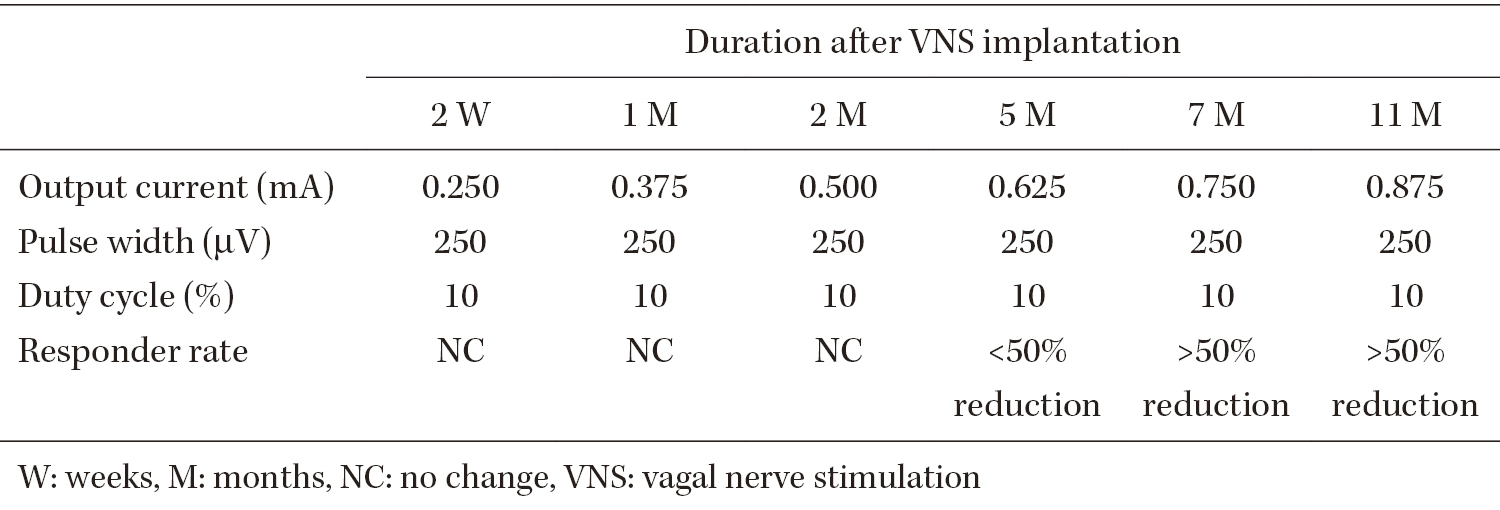- 著者
- Kyoko TATEBAYASHI Ichiro TAKUMI Takashi MATSUMORI Kimiyuki KAWAGUCHI Hidetoshi MURATA
- 出版者
- The Japan Neurosurgical Society
- 雑誌
- NMC Case Report Journal (ISSN:21884226)
- 巻号頁・発行日
- vol.10, pp.321-325, 2023-12-31 (Released:2023-11-11)
- 参考文献数
- 23
Epilepsy with eyelid myoclonia is a childhood-onset generalized epilepsy, which is more common in women. Over 90% of the patients continue antiseizure medications, especially valproate, and more than 60% of cases are refractory. The efficacy of vagus nerve stimulation in treating eyelid myoclonia is still unknown. Polycystic ovary syndrome is highly prevalent in women with epilepsy receiving valproate; nevertheless, no reports on the complication of polycystic ovary syndrome in women with epilepsy with eyelid myoclonia were found. In this report, a case of a woman with epilepsy with eyelid myoclonia who developed polycystic ovary syndrome while receiving valproate and underwent vagus nerve stimulation is described. A 26-year-old female patient has been administered valproate since the occurrence of generalized seizures at the age of 12 years and then developed polycystic ovary syndrome. When the dose of valproate was reduced as an adult, her epilepsy became intractable. Information from her mother led to a video electroencephalography re-evaluation, and she was finally diagnosed 15 years after onset. The patient underwent vagus nerve stimulation. In a short-term follow-up, she achieved >50% seizure reduction at low output currents of <1.00 mA. Polycystic ovary syndrome was cured 15 months after valproate withdrawal. There are three key points presented in this case: Vagus nerve stimulation therapy was useful for treating epilepsy with eyelid myoclonia with absence. Women with epilepsy with eyelid myoclonia taking valproate must be aware of the risk of polycystic ovary syndrome and monitor their menstrual cycles. Information from the family, such as home videos, helped with the diagnosis.
